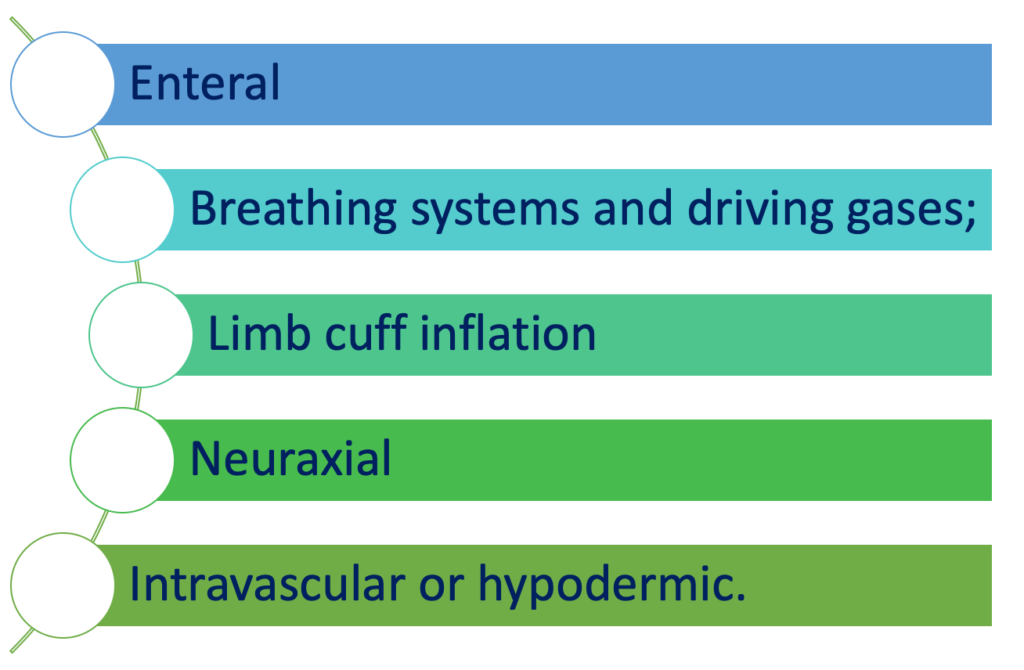ISO 80369-1 entitled “Small-bore connectors for liquids and gases in healthcare applications – Part 1: General requirements” specifies the design, dimensions, and performance requirements for small-bore connectors intended for use in medical devices or accessories. It is an essential standard considering the extensive use of small-bore connectors (such as, for example, Luer Lock systems) within the medical device sector. The 80369-1 standard, for the reasons mentioned before, is one of the key aspect of the medical device design process, and in particular it plays a fundamental role within design verification activities; it is also essential to claim compliance with GSPR (general safety and performance requirements) and, in general, with EU MDR 2017/745.
Scope of ISO 80369-1
The standard ISO 80369-1 specifies the general requirements for small-bore connectors, which typically convey liquids or gases in healthcare applications. Specifcally, the standards relates to small-bore connectors used in the following sectors:
- Breathing systems and driving gases;
- Enteral;
- Limb cuff inflation
- Neuroaxial
- Intravascular or hypodermic.
One of the key characteristics of small-bore connector is the non-interconnection, introduced to reduce the risk of misconnections between medical devices or between accessories for different applications. The standard ISO 80369 provides a framework for the demonstration of the non-interconnectable characteristic of small-bore connectors.

Materials requirements
ISO 80369-1 requires that the surfaces of small connectors that need to stay separate from others must be made from materials that are really stiff, with a measure called “modulus of elasticity” being more than 700 MPa. If there’s a different rule in the ISO 80369 series, then that rule applies instead. Other surfaces that don’t need to keep things separate don’t have to follow this stiff material rule.
Small-bore connectors incompatibility
In relation to the requirement of connector incompatibility, small-bore connectors in each application category should not be able to connect with small-bore connectors from other application categories. To make sure they follow the rules, manufacturers shall check if tests show that risks have been lowered to acceptable levels based on the criteria defined within ISO 80369-1 and any other criteria set by the manufacturer for preventing connections.
Small-bore connectors for specific applications as per ISO 80369-1
Design of small-bore connectors shall follow specific rules based on the final intended use of the medical device containing the connectors.
Connectors designed for enteral applications must follow the guidelines outlined in ISO 80369-3. However, if using these connectors poses a risk that’s deemed unacceptable for a particular medical device or accessory, they should instead adhere to ISO 80369-1.
Similarly, connectors designed for inflating limb cuffs must meet the requirements specified in IEC 80369-5, unless their use poses unacceptable risks for a particular medical device or accessory. In such cases, compliance with ISO 80369-1 is necessary.
In the same way connectors used for neuroaxial application shall comply with ISO 80369-6 whereas the connectors embedded to the devices used for intravascular or hypodermic applications shall comply with ISO 80369-7.
Given the importance we will discuss in details about ISO 80369-7. It is however important to mention ISO 80369-7 sets forth requirements for the design, dimensions, and performance of small-bore connectors used in intravascular or hypodermic applications. Its primary goal is to prevent misconnections between incompatible medical devices, which can lead to serious patient harm.
Alternative Small-Bore Connectors
Alternative designs of small-bore connectors may be utilized in a medical device or accessory, under the following conditions:
a) They must be assessed for non-interconnectable characteristics, except when connecting to a connector within the same application category.
b) They must not pose unacceptable risks for a specific medical device or accessory.
c) Evaluation must comply with the engineering analysis outlined in Annex D3 of ISO 80369-1.
d) Material characteristics must adhere to the requirements specified in clause 4 of ISO 80369-1.
Additionally, these connectors must be labeled in accordance with the symbol provided in section 5.4.3 of ISO 15223-1. Furthermore, they should include a specific warning in the instructions for use (IFU), stating: “As this medical device utilizes an alternative small-bore connector design different from those specified in the ISO 80369 series, there is a possibility of misconnection between this medical device and another medical device using a different alternative small-bore connector. This could lead to hazardous situations and harm to the patient. Therefore, the user must take special precautions to mitigate these reasonably foreseeable risks.”
Subscribe to 4EasyReg Newsletter
4EasyReg is an online platform dedicated to Quality & Regulatory matters within the medical device industry. Have a look to all the services that we provide: we are very transparent in the pricing associated to these consulting services.
Within our WebShop, a wide range of procedures, templates, checklists are available, all of them focused on regulatory topics for medical device compliance to applicable regulations. Within the webshop, a dedicated section related to cybersecurity and compliance to ISO 27001 for medical device organizations is also present.
As one of the leading online platforms in the medical device sector, 4EasyReg offers extensive support for regulatory compliance. Our services cover a wide range of topics, from EU MDR & IVDR to ISO 13485, encompassing risk management, biocompatibility, usability, software verification and validation, and assistance in preparing technical documentation for MDR compliance.
Do not hesitate to subscribe to our Newsletter!
